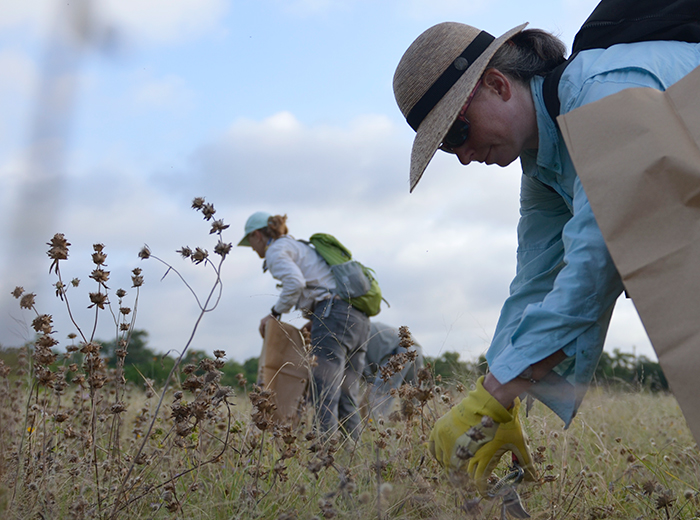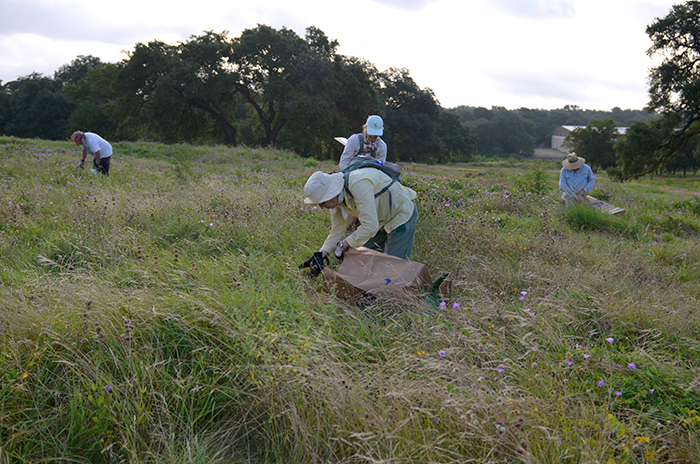Seeds of Change

Wildflower Center ecologist Michelle Bertelsen (foreground) harvests seeds with volunteers. PHOTO John Hart Asher
ON A BALMY DAY IN JULY, Wildflower Center ecologists and volunteers descended on a 75-acre tract along Shoal Creek in Central Austin to collect wildflower and grass seeds from a meadow that has treated neighbors to spring flower shows for years. The crew collected seeds from more than 50 species of native plants.
“We are really excited about the diversity we found,” said project lead and environmental designer John Hart Asher, M.L.A. “There were some bluebonnets, but also a lot of species not commercially available. It was a very interesting mix.”
The center’s effort was part of a conservation program being implemented for a mixed-use community called The Grove at Shoal Creek, which is slated for development on the property.
“The community values and has an attachment to the wildflowers, and we are committed to investing in the preservation of the flowers and other diverse native plants throughout the site for their natural beauty as well as the ecological and environmental benefits,” said Garrett Martin, manager of ARG Bull Creek LTD, developers of the community.
The collected seeds are to be used to redevelop landscapes on the property. Current plans call for using the preserved wildflower seeds along the frontage of the development and for creating a prairie ecosystem east of the development’s pond in a public park along Shoal Creek. (While the center has helped create urban native prairie landscapes throughout the state at places like the George W. Bush Presidential Center in Dallas, its work with The Grove to date is just for seed collection and storage.)
Urban prairies can provide a number of benefits including sustaining pollinators and birds, absorbing rainfall, slowly releasing rainwater into streams, reducing erosion and flooding, and filtering pollution. In a larger sense, prairies can also provide communities with a sense of place as the landscapes are a reflection of a region’s unique ecology.

Wildflower Center volunteers and staff collect seeds where the future Grove development will be built in Central Austin. The seeds will be reused for landscapes in the development. PHOTO John Hart Asher
To prepare for future restoration efforts, more than 20 pounds of seeds were collected in 18 bags and moved to storage at the Wildflower Center. Asher said the yield could easily re-seed one full acre, and if needed, be blended with commercially sourced seed to restore a much larger area.
Harvesting and storing the seeds from native plants on-site for future re-planting – instead of only using new, commercially available seeds after construction – ensures the local genetic diversity of the prairie is preserved.
“These plants have existed in the area since pre-settlers, and they have adapted to the conditions there. By using seeds harvested from the area, we can help ensure the diversity and survivability of the community in the future,” said Asher. “They’ll have a much better chance of thriving again long-term when re-seeded.”

